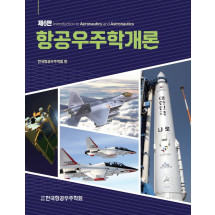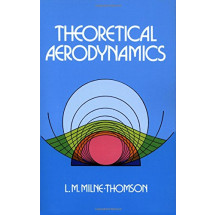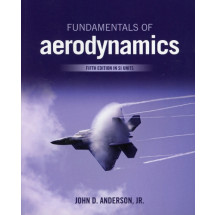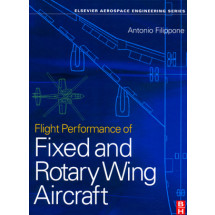Contents
About the Authors ix
Acknowledgements xi
Sources of Background Information
Glossary xv
1 Introduction 1
Further Reading 4
2 The Airframe and Systems Overview 5
2.1 Introduction 5
2.2 The Airframe 6
2.3 The Aircraft Systems 10
2.4 Classification of Aircraft Roles 14
2.5 Classification of Systems 25
2.6 Stakeholders 26
2.7 Example Architectures 27
2.8 Data Bus 29
2.9 Summary and Conclusions 34
References 34
Exercises 35
3 Vehicle Systems 37
3.1 Propulsion System 38
3.2 Fuel System 44
3.3 Electrical Power Generation and Distribution 49
3.4 Hydraulic Power Generation and Distribution 53
3.5 Bleed Air System 56
3.6 Secondary Power Systems 59
3.7 Emergency Power Systems 61
xiii
3.8 Flight Control System 65
3.9 Landing Gear 68
3.10 Brakes and Anti-skid 71
3.11 Steering System 73
3.12 Environmental Control System 76
3.13 Fire Protection System 79
3.14 Ice Detection 82
3.15 Ice Protection 84
3.16 External Lighting 86
3.17 Probe Heating 89
3.18 Vehicle Management System (VMS) 91
3.19 Crew Escape 93
3.20 Canopy Jettison 97
3.21 Oxygen 99
3.22 Biological and Chemical Protection 102
3.23 Arrestor Hook 104
3.24 Brake Parachute 107
3.25 Anti-spin Parachute 110
3.26 Galley 112
3.27 Passenger Evacuation 115
3.28 In-Flight Entertainment 117
3.29 Toilet and Water Waste 119
3.30 Cabin and Emergency Lighting 122
References 123
Exercise 126
4 Avionic Systems 127
4.1 Displays and Controls 127
4.2 Communications 131
4.3 Navigation 134
4.4 Example Navigation System Architecture 135
4.5 Flight Management System (FMS) 138
4.6 Weather Radar 140
4.7 Air Traffic Control (ATC) Transponder 143
4.8 Traffic Collision and Avoidance System (TCAS) 146
4.9 Terrain Avoidance and Warning System (TAWS) 149
4.10 Distance Measuring Equipment (DME)/TACAN 152
4.11 VHF Omni-Ranging (VOR) 154
4.12 Automatic Flight Control System 156
4.13 Radar Altimeter (Rad Alt) 160
4.14 Automated Landing Aids 163
4.15 Air Data System (ADS) 168
4.16 Accident Data Recording System (ADRS) 172
4.17 Electronic Flight Bag (EFB) 174
4.18 Prognostics and Health Management System (PHM) 178
4.19 Internal Lighting 181
4.20 Integrated Modular Architecture (IMA) 183
4.21 Antennas 185
References 189
5 Mission Systems 191
5.1 Radar System 192
5.2 Electro-optical System 197
5.3 Electronic Support Measures (ESM) 200
5.4 Magnetic Anomaly Detection (MAD) 202
5.5 Acoustic System 205
5.6 Mission Computing System 207
5.7 Defensive Aids 209
5.8 Station Keeping System 212
5.9 Electronic Warfare System 214
5.10 Camera System 217
5.11 Head Up Display (HUD) 220
5.12 Helmet Mounted Systems 222
5.13 Data Link 224
5.14 Weapon System 227
5.15 Mission System Displays and Controls 230
5.16 Mission System Antennas 234
References 237
Further Reading 239
Exercises 239
6 Supporting Ground Systems 241
6.1 Flight Test Data Analysis 243
6.2 Maintenance Management System 246
6.3 Accident Data Recording 248
6.4 Mission Data Management (Mission Support System) 250
6.5 UAV Control 252
References 254
Exercises 255
7 Modelling of Systems Architectures 257
7.1 Introduction 257
7.2 Literature Survey of Methods 259
7.3 Avionics Integration Architecture Methodology 277
7.4 Avionics Integration Modelling of Optimisation 292
7.5 Simulations and Results for a Sample Architecture 297
7.6 Conclusion 300
References 300
8 Summary and Future Developments 305
8.1 Introduction 305
8.2 Systems of Systems 305
8.3 Architectures 314
8.4 Other Considerations 315
8.5 Conclusion 323
8.6 What’s Next? 323
Exercise 327
Index 329
bout the Authors xxix
Acknowledgements xxxi
Sources of Information xxxiii
Glossary and Abbreviations xxxv
1 Introduction 1
References 4
2 The Airframe and Systems Overview 5
2.1 Introduction 5
2.2 The Airframe 6
2.2.1 Impact on the structure 8
2.2.2 Impact on Atmosphere 8
2.2.3 Atmosphere Impact on Structure 9
2.2.4 The Crash Case 10
2.3 The Aircraft Systems 10
2.3.1 System Diagram 10
2.3.2 Key Characteristics of Systems 12
2.4 Classification of Aircraft Roles 14
2.4.1 Commercial 14
2.4.2 General Aviation 15
2.4.3 Regional 15
2.4.4 Long Haul 15
2.4.5 Military 16
2.4.6 Air Superiority 16
2.4.7 Ground Attack 17
2.4.8 Strategic Bombing 18
2.4.9 Maritime Patrol 18
2.4.10 Battlefield Surveillance 19
2.4.11 Airborne EarlyWarning (AEW) 20
2.4.12 ElectronicWarfare 21
2.4.13 Photographic Reconnaissance 21
2.4.14 Air-to-Air Refuelling 22
2.4.15 Troop and Materiel Transport 22
2.4.16 Training Aircraft 23
2.4.17 Unmanned Air Vehicles 23
2.4.18 Special Roles 24
2.4.19 Law Enforcement and Civilian Agencies 25
2.5 Classification of Systems 25
2.6 Stakeholders 26
2.7 Example Architectures 27
2.8 Data Bus 29
2.9 Summary and Conclusions 34
References 34
Exercises 35
3 Vehicle Systems 37
3.1 Propulsion System 38
3.1.1 Purpose of System 39
3.1.2 Description 39
3.1.3 Safety/Integrity Aspects 39
3.1.4 Key Integration Aspects 40
3.1.5 Key Interfaces 41
3.1.6 Key Design Drivers 42
3.1.7 Modelling 42
3.1.8 References 43
3.1.9 Sizing Considerations 43
3.1.10 Future Considerations 43
3.2 Fuel System 44
3.2.1 Purpose of System 45
3.2.2 Description 45
3.2.3 Safety/Integrity Aspects 46
3.2.4 Key Integration Aspects 46
3.2.5 Key Interfaces 47
3.2.6 Key Design Drivers 48
3.2.7 Modelling 48
3.2.8 References 48
3.2.9 Sizing Considerations 48
3.2.10 Future Considerations 48
3.3 Electrical Power Generation and Distribution 50
3.3.1 Purpose of System 50
3.3.2 Description 50
3.3.3 Safety/Integrity Aspects 50
3.3.4 Key Integration Aspects 51
3.3.5 Key Interfaces 51
3.3.6 Key Design Drivers 51
3.3.7 Modelling 51
3.3.8 References 52
3.3.9 Sizing Considerations 52
3.3.10 Future Considerations 52
3.4 Hydraulic Power Generation and Distribution 53
3.4.1 Purpose of the System 54
3.4.2 Description 54
3.4.3 Safety/Integrity Aspects 54
3.4.4 Key Integration Aspects 54
3.4.5 Key Interfaces 54
3.4.6 Key Design Drivers 55
3.4.7 Modelling 55
3.4.8 References 55
3.4.9 Sizing Considerations 55
3.4.10 Future Considerations 56
3.5 Bleed Air System 56
3.5.1 Purpose of the System 57
3.5.2 Description 57
3.5.3 Safety/Integrity Aspects 57
3.5.4 Key Integration Aspects 57
3.5.5 Key Interfaces 57
3.5.6 Key Design Drivers 58
3.5.7 Modelling 58
3.5.8 References 58
3.5.9 Sizing Considerations 58
3.5.10 Future Considerations 58
3.6 Secondary Power Systems 59
3.6.1 Purpose of System 60
3.6.2 Description 60
3.6.3 Safety/Integrity Aspects 60
3.6.4 Key Integration Aspects 60
3.6.5 Key Interfaces 60
3.6.6 Key Design Drivers 60
3.6.7 Modelling 61
3.6.8 References 61
3.6.9 Sizing Considerations 61
3.6.10 Future Considerations 61
3.7 Emergency Power Systems 61
3.7.1 Purpose of System 63
3.7.2 Description 63
3.7.3 Safety/Integrity Aspects 63
3.7.4 Key Integration Aspects 63
3.7.5 Key Interfaces 64
3.7.6 Key Design Drivers 64
3.7.7 Modelling 64
3.7.8 References 64
3.7.9 Sizing Considerations 64
3.7.10 Future Considerations 65
3.8 Flight Control System 65
3.8.1 Purpose of System 65
3.8.2 Description 66
3.8.3 Safety/Integrity Aspects 66
3.8.4 Key Integration Aspects 66
3.8.5 Key Interfaces 66
3.8.6 Key Design Drivers 67
3.8.7 Modelling 67
3.8.8 References 67
3.8.9 Sizing Considerations 67
3.8.10 Future Considerations 68
3.9 Landing Gear 68
3.9.1 Purpose of System 69
3.9.2 Description 69
3.9.3 Safety/Integrity Aspects 69
3.9.4 Key Integration Aspects 70
3.9.5 Key Interfaces 70
3.9.6 Key Design Drivers 70
3.9.7 Modelling 70
3.9.8 References 70
3.9.9 Sizing Considerations 71
3.9.10 Future Considerations 71
3.10 Brakes and Anti-skid 71
3.10.1 Purpose of System 72
3.10.2 Description 72
3.10.3 Safety/Integrity Aspects 72
3.10.4 Key Integration Aspects 72
3.10.5 Key Interfaces 72
3.10.6 Key Design Drivers 73
3.10.7 Modelling 73
3.10.8 References 73
3.10.9 Sizing Considerations 73
3.10.10 Future Considerations 73
3.11 Steering System 73
3.11.1 Purpose of System 74
3.11.2 Description 74
3.11.3 Safety/Integrity Aspects 75
3.11.4 Key Integration Aspects 75
3.11.5 Key Interfaces 75
3.11.6 Key Design Drivers 75
3.11.7 Modelling 75
3.11.8 References 75
3.11.9 Sizing Considerations 76
3.11.10 Future Considerations 76
3.12 Environmental Control System 76
3.12.1 Purpose of System 77
3.12.2 Description 77
3.12.3 Safety/Integrity Aspects 77
3.12.4 Key Integration Aspects 77
3.12.5 Key Interfaces 77
3.12.6 Key Design Drivers 78
3.12.7 Modelling 78
3.12.8 References 78
3.12.9 Sizing Considerations 78
3.12.10 Future Considerations 78
3.13 Fire Protection System 79
3.13.1 Purpose of System 80
3.13.2 Description 80
3.13.3 Safety/Integrity Aspects 80
3.13.4 Key Integration Aspects 81
3.13.5 Key Interfaces 81
3.13.6 Key Design Drivers 81
3.13.7 Modelling 81
3.13.8 References 82
3.13.9 Sizing Considerations 82
3.13.10 Future Considerations 82
3.14 Ice Detection 83
3.14.1 Purpose of System 83











